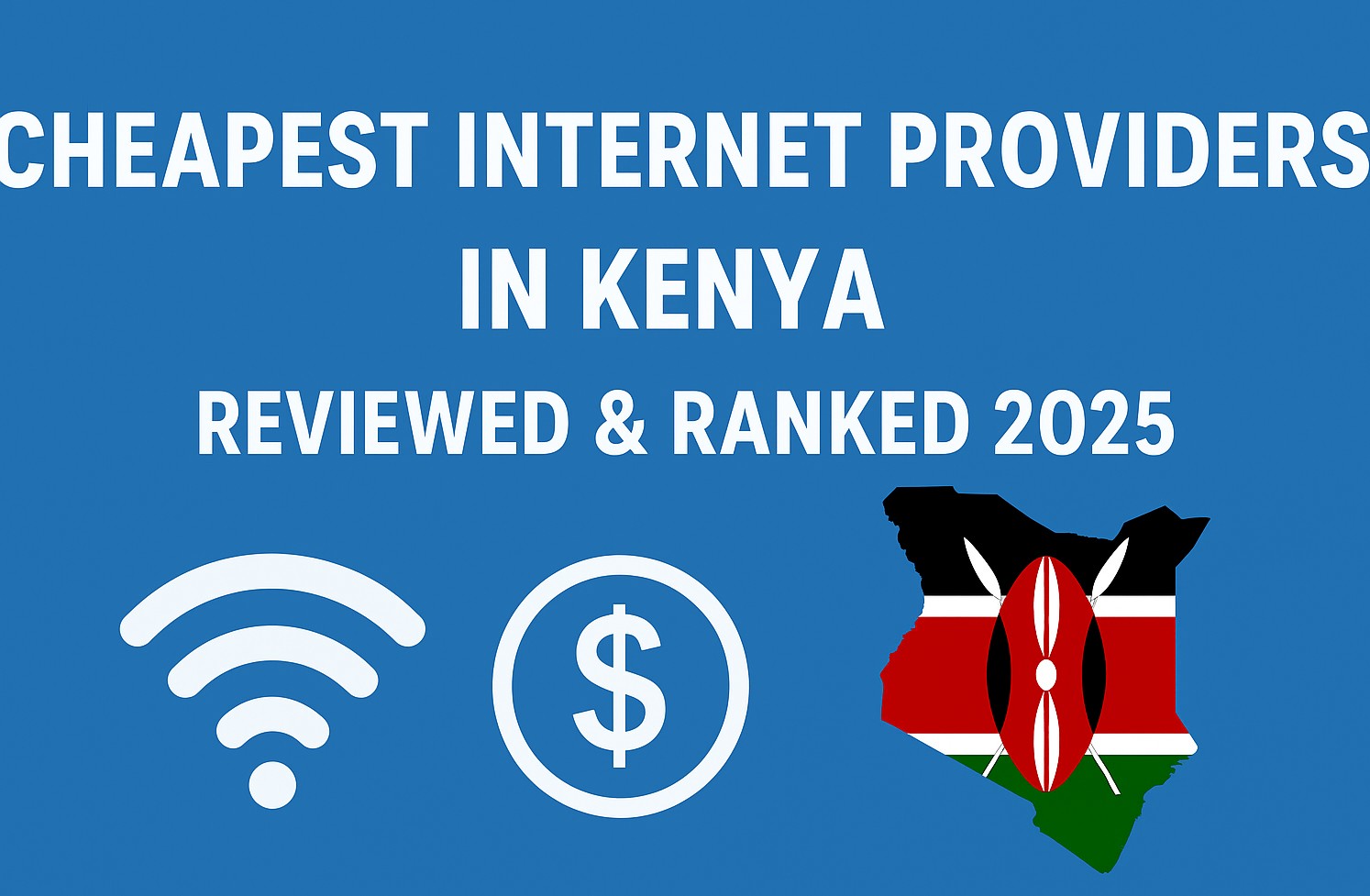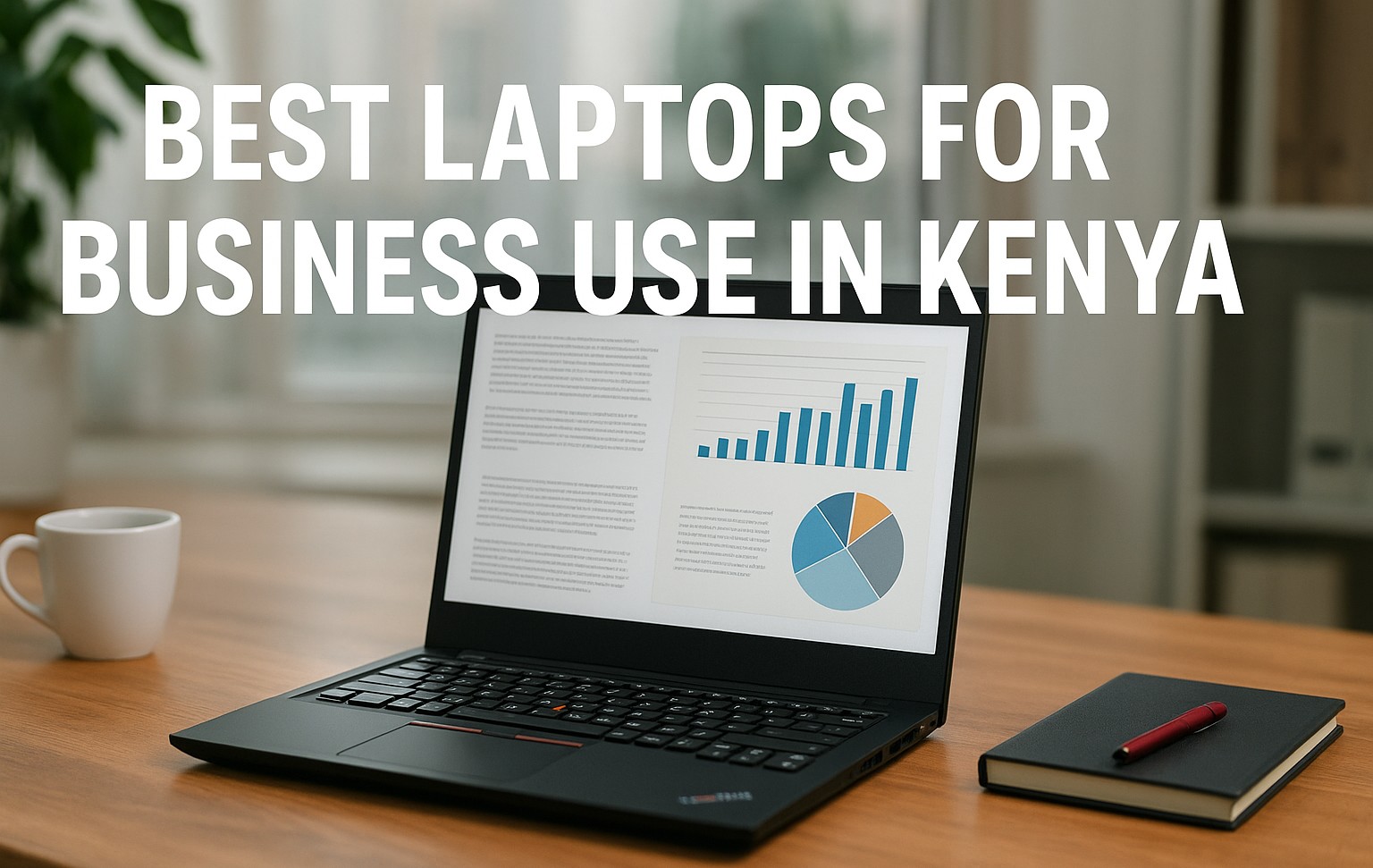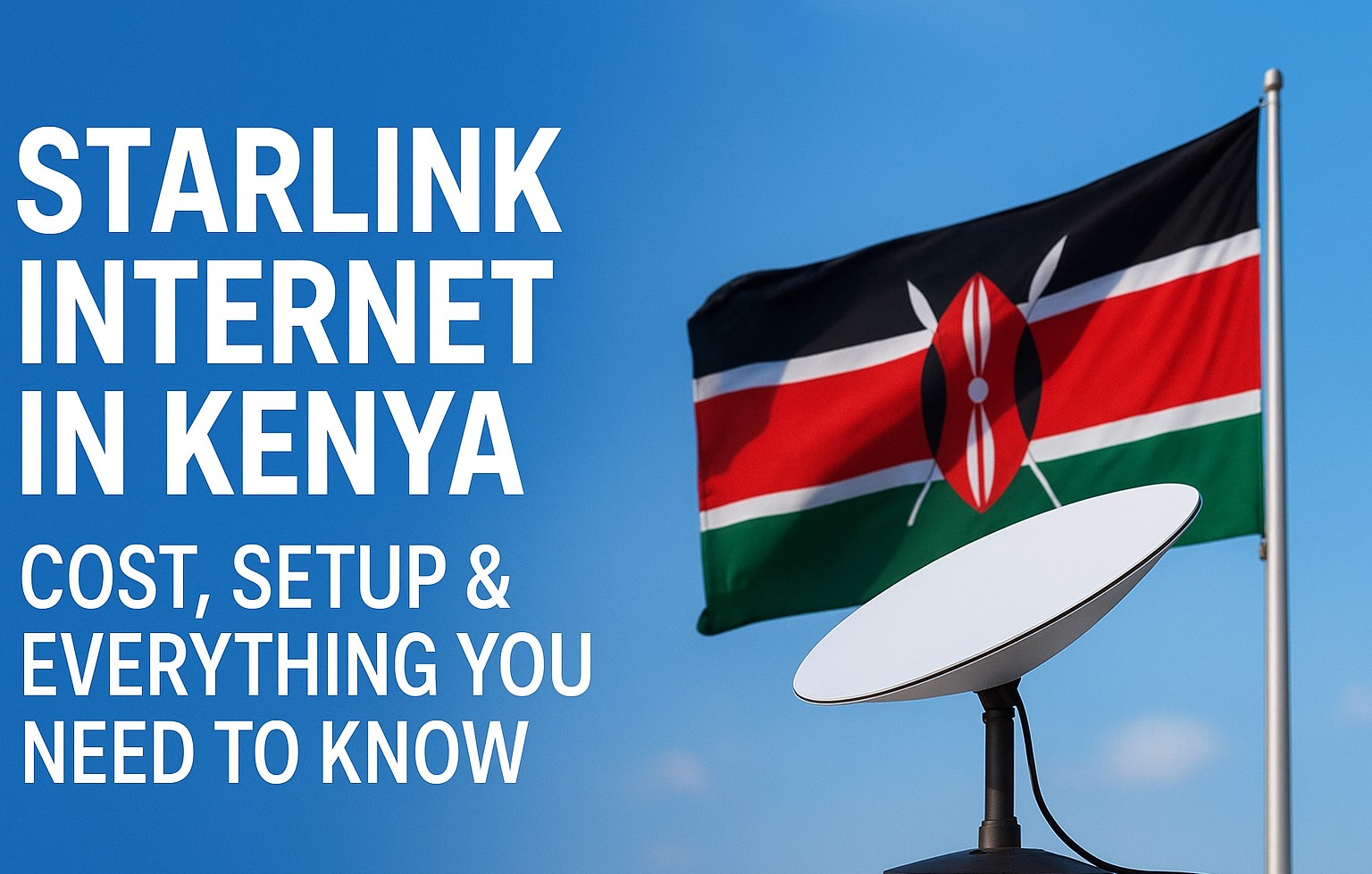

Titus Morebu
Author
Cheapest Internet Providers in Kenya Reviewed & Ranked 2025
Explore Kenya’s lowest-cost ISPs in 2025: plans, speeds, coverage, pros & cons — plus tips to pick one that fits your needs and budget.
📶 Cheapest Internet Providers in Kenya Reviewed (2025 Edition)
In Kenya’s fast-growing digital economy, access to affordable and reliable internet is more essential than ever. Whether you're streaming, working from home, or schooling online, choosing the right Internet Service Provider (ISP) can make all the difference. Below is a comprehensive, up-to-date review of Kenya’s most cost-effective ISPs (as of 2025), along with tips to pick the best one for your situation.
Why “cheapest” doesn’t always mean “best” 🧐
Before diving into numbers and names, here are key factors to consider — because low price is only part of the story.
- Coverage & availability: Some providers serve only select estates, towns, or parts of cities.
- Speed & reliability: A cheaper plan with constant outages or slowdowns may cost more in frustration than a solid mid-tier one.
- Installation & equipment costs: Some ISPs waive installation; others might charge for routers or setup.
- Data caps & fair usage policies (FUP): “Unlimited” plans may throttle after certain usage levels.
- Support & service: Customer service, maintenance, and repair turnaround times matter.
Top Affordable ISPs in Kenya (2025)
Here’s a ranked breakdown of some of the most budget-friendly ISPs in Kenya today, with their strengths and tradeoffs.
1. Poa! Internet
Poa! is often cited as one of the most affordable fixed-internet providers targeting lower and middle income households.
- Plan examples: Their lowest “home WiFi” plan is often capped at 5 Mbps, with unlimited usage, priced around KES 1,575 monthly or KES 450 weekly depending on location.
- Installation: There is often an installation or connection fee (e.g. around KES 2,500).
- Best for: Basic browsing, social media, remote learning, and areas underserved by fiber.
- Limitations: Speeds are modest; not ideal for heavy streaming or multiple users with high demands.
2. Zuku (Wananchi Group)
Zuku offers a mix of fiber and hybrid last-mile technology. It is more expensive than Poa! in many cases, but offers higher speeds and a better experience.
- Plan tiers: For example, 10 Mbps at ~ KES 2,800; 20 Mbps at ~ KES 4,200; 60 Mbps around KES 6,000 (prices may vary by region).
- Pros: More consistent performance, better for families streaming or multiple users.
- Drawbacks: In some areas, Zuku’s availability is limited; also, there may be bundling conditions.
3. Safaricom Home Fibre / 4G+ Router Packages
Safaricom, Kenya’s largest telco, has expanded into fixed and home broadband heavily.
- Typical plans:
- 15 Mbps at ~ KES 2,999
- 30 Mbps ~ KES 4,100
- 80 Mbps ~ KES 6,299
- Higher tiers: 500 Mbps and 1 Gb speeds also offered at higher cost.
- 4G+ option: In areas without fiber, Safaricom offers a 4G home router (with data bundles) to bridge the gap.
- Pros: Strong brand, decent support, often good network stability.
- Cons: The “cheapest” Safaricom plan is seldom the lowest in the market; it's a balance of price & performance.
4. Faiba (JTL)
Faiba is aggressive in expanding fiber to homes and is competitive in pricing.
- Plan examples:
- 35 Mbps for ~ KES 3,000
- 60 Mbps ~ KES 4,000
- 90 Mbps ~ KES 5,000
- 150 Mbps or higher for KES 10,000+ in some markets
- Pros: Good mix of speed and price, expanding footprint.
- Limitations: In areas where fiber is not yet laid, they may not serve you.
5. Vilicom Networks
Vilicom operates smaller scale fiber and fixed wireless networks, often in estate or gated-community settings.
- Plan ranges: 8 Mbps ~ KES 2,000; 18 Mbps ~ KES 2,800; 30 Mbps ~ KES 3,800; 60 Mbps ~ KES 5,000; and up to 500 Mbps in some locales.
- Advantages: Very competitive in areas where they are present; local presence often helps support.
- Drawbacks: Limited geographical reach compared to the bigger ISPs.
6. Mawingu (Wireless / Rural Focus)
Mawingu is a niche player aiming to serve underserved / rural areas using wireless infrastructure.
- Plans: Unlimited home WiFi from ~ KES 2,500 for ~10 Mbps; higher tiers for more speed (e.g. 20 Mbps at ~ KES 4,500).
- Strengths: Good in areas lacking fiber or wired infrastructure.
- Challenges: Wireless signals are subject to line-of-sight, interference, and network load.
7. StimaNet
StimaNet is a smaller local ISP with plans targeted at homes in its coverage areas.
- Example plan pricing: 7 Mbps at ~ KES 1,500; 12 Mbps at ~ KES 2,000; 25 Mbps at ~ KES 2,500; and up to ~65 Mbps at ~ KES 5,000.
- Pros: Among the lowest base pricing in some zones; simplicity in plans.
- Cons: Service is only available in limited zones; speed consistency and support may vary.
8. Satellite Option: Starlink
For remote or rural locations, satellite links sometimes become the “cheapest viable” option.
- Upfront cost: You must purchase or rent the hardware (dish, router) — this is nontrivial.
- Monthly plans: Starlink offers unlimited plans (with fair usage) which, in some comparisons, are cheaper than the leading fixed ISPs once you amortize the gear. However, pricing is dynamic.
- Pros: Works where no wired or wireless ISP can reach; global coverage concept.
- Cons: Latency is higher than fiber; weather and obstruction may affect performance; high upfront cost.
How to Choose the Best Low-Cost ISP for You
Here’s a step-by-step process to pick the cheapest internet provider that works for your location and use case.
- Check availability in your area: Use ISP coverage maps or ask neighbors—many “cheap” plans are only available in certain estates.
- Decide your speed need: For solo browsing and email, 5–10 Mbps might suffice. But families, streaming, or remote work may need 20–50 Mbps or more.
- Calculate total cost of ownership: Factor in installation, router fees, and possible periodic surcharges.
- Check real-world performance: Ask for user feedback in your area regarding outages, speed during peak hours, and support responsiveness.
- Understand terms & fair usage: Even “unlimited” plans may slow down after a certain threshold.
- Look for promotional offers: Many ISPs offer discounted rates or waive fees to attract new customers.
Comparison Snapshot
| ISP | Entry Speed / Price Estimate | Strengths | Limitations |
|---|---|---|---|
| Poa! Internet | 5 Mbps ~ KES 1,575 monthly | Lowest cost, unlimited in many areas | Limited speed, installation cost |
| Zuku | 10 Mbps ~ KES 2,800 | Better for families, more speed | Selective coverage |
| Safaricom Home Fibre / 4G+ | 15 Mbps ~ KES 2,999 | Reliable network, good support | Not always the lowest price |
| Faiba (JTL) | 35 Mbps ~ KES 3,000 | Solid speed per cost | Coverage still expanding |
| Vilicom | 8 Mbps ~ KES 2,000 | Locally competitive plans | Limited reach |
| Mawingu | 10 Mbps ~ KES 2,500 | Good for rural wireless | Wireless consistency challenge |
| StimaNet | 7 Mbps ~ KES 1,500 | Lowest base in some areas | Small footprint, variable reliability |
| Starlink | Unlimited plan monthly (gear upfront) | Works where no terrestrial ISP | High initial cost, latency, weather impact |
Tips to Stretch Your Internet Budget
- Negotiate installation waivers or discounts with ISPs.
- Choose off-peak hours for heavy downloads (if FUP allows).
- Share bandwidth across roommates or family (within fair use policy).
- Upgrade only when price per Mbps falls below your current cost-per-unit threshold.
- Monitor usage and avoid overpaying for speed you won’t use.
Conclusion
If your priority is pure minimal cost, **Poa! Internet** stands out as a top contender for low-speed, unlimited access in many areas. But for better speeds, more stability, and future-proofing, mid-tier options like **Zuku**, **Safaricom**, or **Faiba** often offer better value overall.
Always check that the ISP you choose actually serves your estate, evaluate real-world performance in your area, and confirm all hidden or upfront charges. That way, you get genuinely affordable, usable internet — not just marketing hype.
Happy browsing and streaming! 🌐
Note: Prices and offerings vary by region and are subject to change. Contact providers in your area for the latest deals.
Gallery

Related Articles
3 articles
Best Laptops for Business Use in Kenya
Discover the top business laptops in Kenya (2025) with performance, durability, support, and pricing insights for professionals and organizations.

Starlink Internet in Kenya: Cost, Setup & Everything You Need to Know 🚀
Explore Starlink’s latest pricing, hardware options, step-by-step setup and performance tips for Kenya in 2025—get reliably connected even in remote areas.

Best Laptops for Students in Kenya: 2025 Edition 🎓
Top student laptops in Kenya 2025 — tips, specs, and where to buy the best deals